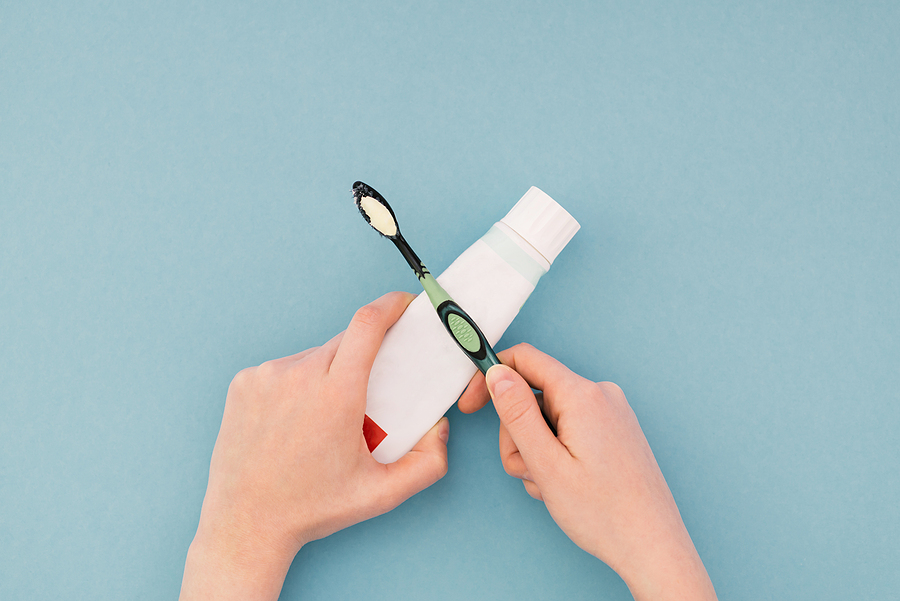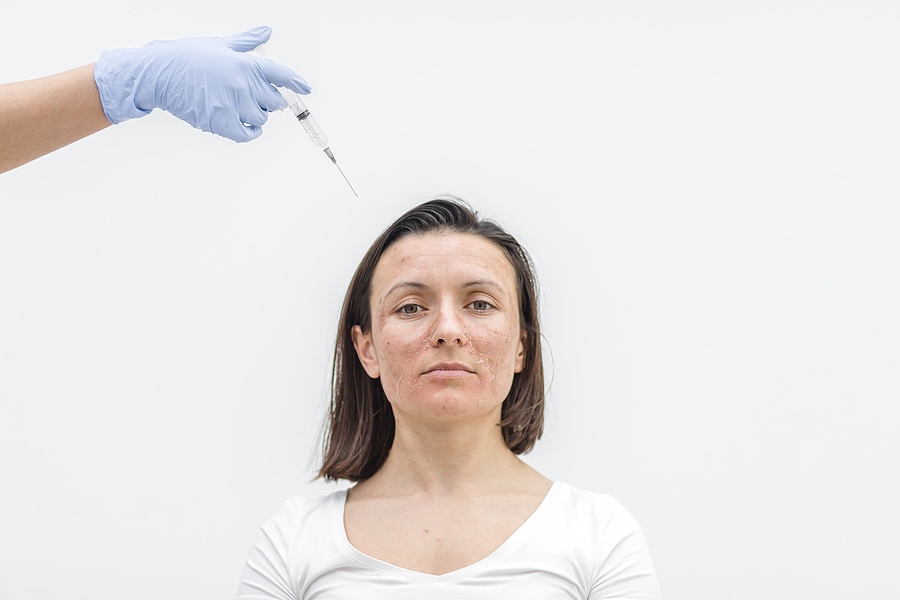Everyone has heard of iodine, but what if we were asked to define iodine’s role in human health? We might either think of it as merely an added ingredient to table salt (though many people don’t know exactly why), or as the bright orange tincture used by our parents to disinfect our childhood cuts and scrapes. But iodine is a critical element in healthy thyroid hormone production, and if it’s not available in the tiny amounts needed by the thyroid gland, there can be wide-ranging physical consequences.
These days, I have a growing concern that many of us may not be getting enough of this essential element. Although evidence of widespread iodine deficiency seems clear to me, the idea is still controversial in conventional medical circles. Several years ago, a Newsweek article quoted an eminent medical school professor pronouncing iodine deficiency rare in women in the US. Many of the magazine’s readers might not have given the subject a second thought. But around the same time, compelling data was reported by the Centers for Disease Control suggesting that some 2.2 million women nationwide could have low iodine. Sadly, not much has changed in recent years. The conventional medical community still sees iodine deficiency as rare, and I still have big concerns that something crucial is being overlooked.
To learn more about the roles iodine, selenium, and other key nutrients play in thyroid function, see our article, “Simple Dietary Changes That Can Help Your Thyroid Naturally.”
As we learn more about how iodine functions in the body, research is revealing connections between diet, environment, and the rise of thyroid, breast, and immune system problems in women. Maybe you’ve had recent thyroid testing that came back borderline, or you’ve been diagnosed with hypothyroidism (inadequate production of thyroid hormones), and you’re already on thyroid medication. Perhaps you have a fibrocystic breast condition and avoid salt by choice or due to high blood pressure. If so, it’s possible you could benefit from more insight into your iodine status and available testing and treatment options.
Iodine Deficiency — How Common Is It?
As a functional medicine practitioner, I am more and more intrigued by iodine. How widespread is iodine deficiency? Why is it downplayed, and even overlooked here in the US? When iodine deficiency was first recognized as a public concern in the 1920’s, iodine was subsequently added first to flour, then to salt, and the problem was considered solved.
In the US, it’s estimated that one in seven women suffers from iodine deficiency.-Caldwell, K., et al. 2005; Hollowell, J., et al. 1998
But many people don’t know that flour isn’t iodized anymore, and iodization of salt is still voluntary in the US — only one-fifth of our salt is actually iodized. Through extensive reading I’ve found that we’re trending back toward iodine deficiency. Iodine intake has declined 50% in North America in the past 30–40 years, and this is consistent with what I’m seeing in my patients.
As recently as 2004, the New England Journal of Medicine defined our iodine status here in the US as “marginal,” based on data acquired from the International Council for the Control of Iodine Deficiency Disorder and the World Health Organization (WHO). More specifically, the WHO data suggests the greater risk in the US is not iodine deficiency per se, but iodine-induced hyperthyroidism (overproduction of thyroid hormones) or iodine-induced hypothyroidism. Interestingly, both these problems can occur when people who are already iodine-deficient are given too much iodine, too quickly. I believe practitioners need to proceed more cautiously when prescribing iodine supplements, slowly bringing levels up rather than overloading right up front. But the WHO perspective seems to confirm that iodine deficiency does exist here in the US.
For more information about hypothyroidism, read our numerous articles on the topic in our Thyroid Health in our Health Library.
Iodine deficiency may often be overlooked because the symptoms overlap with those of other illnesses, perhaps masking the problem. The 2004 National Health and Nutrition Survey helped dispel the assumption that iodine deficiency in women is a myth. Although there was some leveling off of the drop in overall intake, more than a third of women of childbearing age had insufficient iodine levels. From thyroid issues to breast concerns to cognitive function, this could have serious implications for women’s short- and long-term health as well as that of their children. In my clinic, I’ve noted marginal levels in my patients and am seeing a distinct downward trend of levels in new patients.
8 Dietary Sources of Iodine:
The sea is where it’s at when it comes to iodine. Seafood and seaweeds (sea vegetables) are excellent sources.
Foods most rich in iodine
1. Sea vegetables
2. Saltwater fish and other seafood
3. Iodized sea salt
Other foods that contain some iodine
4. Eggs
5. Dairy Products
6. Onions
7. Radishes
8. Watercress
Remember, even iodized salt is not as high in iodine as you may think – that’s why you should be sure your daily multivitamin-mineral complex contains iodine.
Why Are Some of Us So Iodine-Deficient?
One-third of the world’s population lives in iodine-deficient areas: very little of the earth’s iodine is found in top soils, and even where this mineral is present, it may remain tightly bound up in soil particles. This is the main reason why land vegetable crops are generally not good dietary sources. Women with symptoms of hypothyroidism should have their iodine levels evaluated, especially if they don’t eat many iodine-containing foods.
Factors impacting our iodine intake:
- Iodine’s relative scarcity in most environments
- Iodophobia
- Changes in our diet and environment
-Kopp, P. 2008
But even while we humans have lived for millennia in an iodine-poor environment, the more pressing problem may be the novel burdens our modern surroundings are placing on our systems. Some factors, in addition to a lack of understanding, that make it harder than ever to acquire and retain enough iodine include toxic halide chemicals in our environment filling the iodine void in our bodies; the “demonizing” of salt; over-fishing; and ocean pollution.
Iodophobia. Iodine is one of the essential nutrients that you can get too much of. So both excess iodine and iodine deficiency can impair thyroid function and lead to elevated thyroid-stimulating hormone (TSH) levels. But it’s likely that if you are iodine-replete, you’re less sensitive to excess iodine than people with chronically depleted levels.
In the US, the recommended daily allowance (RDA) for iodine for adults is 150 mcg/day and 290 mcg/day for lactating women. More and more researchers are saying that increasing the RDA would greatly benefit breast, thyroid, and nervous system health in women and infants. Our current RDA is well below the US Food and Nutrition Board’s “upper limit of safety” for iodine (UL = 1100 mcg), which is even lower in Europe (UL = 600 mcg), where iodine deficiency is more common. In Japan, however, where diets include lots of iodine, consumption is about 25 times more than the median intake here, yet the Japanese do not have more thyroid iodine toxicosis.
Individual sensitivity to iodine varies widely, but in the past 10–15 years, experts have found that overall, we are “remarkably tolerant to high intakes of iodine.” It appears that low or high iodine intake is something we get used to over long periods of time — though we’ll always need a certain amount. People living in some coastal regions of Japan regularly consume as much as 50,000–80,000 mcg of iodine daily!
If you’ve never been iodine-deficient, your thyroid will tend to stay normal in function and size even if you consume several milligrams of dietary iodine daily. If you’ve been deficient, you may be hypersensitive to iodine. In my experience, this is not a problem for most women, and even hypersensitive individuals can just gradually adjust their levels upward.
Salt as the enemy. There is a common perception that salt itself is dangerous. Because excessive sodium intake can increase the risk of hypertension, as many as 7 out of 10 women avoid or rarely use it. What’s more, a few years ago the American Medical Association suggested the USFDA remove salt from the list of foods “Generally Recognized as Safe” (GRAS)!
Do we need mandatory universal salt iodization?
If all salt in the US were iodized, a five-fold increase in iodine intake could take place without increasing our salt intake.
-Dasgupta, P., et al. 2008
Contrary to popular belief, four-fifths of the salt in American food is not iodized. That would be fine if only we consumed fewer over-salted, processed, prepackaged, and fast foods (which do not contain iodine), while increasing our intake of sea foods, alkalizing mineral salts (such as potassium citrate, calcium carbonate, calcium ascorbate), and quality iodized sea salt. Not only would we see fewer problems with hypertension, we’d be healthier in every way — with most of us able to excrete any extra sodium we might consume.
The problem with other halogens. Iodine deficiency may also be related to other halogens — non-metals such as fluoride, chloride, and bromide, which are replacing iodine in the body. Most public water drinking supplies include the first two. Perchlorate (which may derive from rocket propellant, Chilean nitrate fertilizers, or other sources) is known to inhibit iodine transport in the body and thyroid function. Some scientists believe the omnipresence of perchlorate is “putting future generations in peril.”
Bromide is also widely present — in soil and crop fumigants as well many foods and drugs. In the 1960’s, iodine was added as an anticaking agent to bakery products, but because of misplaced fears of iodine toxicity (“iodophobia”), it was replaced with bromine in the 1980’s. So we’re ingesting a lot of these halides, which research suggests compete with iodine for absorption and uptake in the body. This means they function as goitrogens (substances that suppress thyroid function by interfering with iodine uptake/accumulation).
According to leading iodine expert, Dr. David Brownstein, iodine will bind to fluoride, chloride, and bromide, as well as to mercury, so these molecules can be removed from the body. But that process depends heavily on having adequate iodine in the body. If you are iodine-deficient, know that other toxic chemicals have replaced it in your body, When you then add it back in, you’re both detoxing these chemicals and adjusting to the new iodine
How’s Your Iodine? — Iodine Testing and Treatment
It’s always best to address the underlying causes of symptoms. If you have symptoms of hypothyroidism, fibrocystic breasts, fatigue, or brain fog, you may want to rule out iodine deficiency as a potential cause or contributor. Iodine functions as a chelating agent, a powerful antioxidant, and as a player in the metabolism of many other hormones, including adrenal and sex hormones — so it’s important to be sure you have enough!
Based on my clinical experience and what I’ve learned from my colleagues, I consider the possibility of iodine deficiency in each new patient I see. Depending on a woman’s symptoms and circumstances, I may also test her iodine levels using a 24-hour iodine/iodide loading test. This test is controversial, because preparation and collection guidelines must be followed carefully to obtain accurate results. The individual being tested avoids iodine and other halogens before undergoing the test then is “challenged” by taking an amount of iodine. After that, the excretion amounts of iodine and certain other elements from the halogen family are measured.
After evaluating the results of this test, I may institute a careful treatment protocol, slowly introducing an iodine replacement drug called Iodoral, in dosages determined by Dr. David Brownstein and others. What I see with this protocol is that iodine levels do not just come up quickly, as the body replaces toxic halides and mercury with iodine. When paced correctly, this regimen — which takes time but has been extremely helpful for many of our patients — helps women avoid the palpitations and anxiety that can occur if iodine levels rise too abruptly.
You can get a sense for whether you may be iodine-deficient using a self-test with an iodine tincture. Accurate, more useful results can be obtained only through laboratory testing. With actual numbers, you and your healthcare practitioner can work together to appropriately replete your iodine levels.
Simple Self-Test for Iodine Deficiency:
To check whether you have enough iodine on board, you can try this safe self-test at home. Simply dip a clean ball of cotton in inexpensive red-tinged USP tincture of iodine from any drugstore. Paint a 2-inch circle of tincture of iodine on soft skin tissue, such as the inner arm or thigh.
Now wait – if the yellow-orange stain takes more than 6 hours to disappear, you are likely to be replete with iodine. If the stain is absorbed quickly (within 1–3 hours), your body may need a higher iodine intake.
The next step is to ask your healthcare provider for the more accurate, 24-hour iodine/iodide loading test.
-Skidmore, B. 2007
Final Thoughts on Iodine Deficiency
The practice of iodine testing and treatment is a relatively emergent science that holds tremendous potential for improving women’s immune, breast, and thyroid health, and consequently our longevity. As we raise our awareness and understand more about how iodine works in the body, we can overcome any lingering “iodophobia” and begin to fully appreciate the value of this essential mineral.








